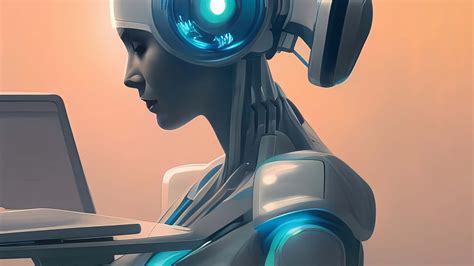- CRYPTOCURRENCY
-
by admin
The digital revolution: how artificial intelligence, non -buttons (NFT) tokens and new art forms redefine the creative industry
In recent years, the digital landscape has undergone a significant transformation. The integration of artificial intelligence (AI) and non -buttocks (NFTS) has opened new paths for creative expression, innovation and disturbances in various industries. While we continue to sail in this unexplored territory, it is essential to understand the impact of these emerging technologies on the world of art.
Artificial intelligence (AI)
AI revolutionizes the way artists create, collaborate and present their work. With the advent of automatic learning algorithms, the tools fueled by AI allowed artists to generate new content, automate repetitive tasks and even help the creative process.
A notable example is the rise of generative opponents (GAN). These algorithms use neural networks to create unique works of art generated by algorithm which question the traditional concepts of creativity. Gans was used in various fields, including music, fashion and even architecture.
Non Butins (NFTS) tokens **
The concept of NFTS is built around the idea of unique digital assets which cannot be reproduced or exchanged as physical goods. This has led to a new wave of artists pushing the limits of what can be created using content generated by AI.
The NFTs have been particularly popular in the field of digital art, where artists use AI tools to generate complex models and conceptions that would be impossible for humans to create alone. The very first NFT sale was made by a digital artist named Beleple, who sold his work for $ 69 million.
New art forms
The convergence of AI and NFT has given birth to new art forms that blur the boundaries between traditional disciplines. Some examples include:
* Music generated by AI : AI algorithms are used to create complex musical compositions, often with unexpected results.
* Sculpture assisted by AI : artists use tools fueled by AI to generate 3D models of sculptures, which can then be manipulated and transformed in various ways.
* Photography by Ai-AIVING : AI is used to analyze and improve photos, creating new types of artistic content.
The impact on the world of art
The digital revolution had a deep impact on the art world, the way we consume art in the creative process itself. Here are some key dishes:
* Democratisation of creativity : AI and NFT have democratized access to artistic creation, allowing more people to participate in the creative process.
* New commercial models : The emergence of NFTS has given rise to new sources of income for artists, collectors and museums.
* Redefine paternity : as the content generated by AI becomes more widespread, questions are raised on paternity and property.
The future of art

While we continue to sail in this unexplored territory, it is clear that the digital revolution will have a deep impact on the world of art. Here are some predictions about what will happen:
* Increased use of the content generated by AI : Expect to see more tools fed in the studio, from painting and sculpture to musical composition.
* RISE OF NFT Marketplaces : Online platforms will become more and more popular for the purchase, sale and trading of digital art.
* Blurage of the lines between human creativity and the creativity of machines : While AI and NFT continue to move forward, we can see new forms of creative expression that question traditional notions of paternity .
Conclusion
The digital revolution transforms the world of art in a way that is both exhilarating and disturbing. While AI and NFT continue to evolve, it is essential to recognize their impact on creativity, innovation and the very fabric of our society.
